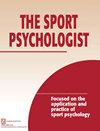Examining the Effects of an Interspersed Biofeedback Training Intervention on Physiological Indices
IF 1.2
4区 心理学
Q3 HOSPITALITY, LEISURE, SPORT & TOURISM
引用次数: 0
Abstract
The study aimed to determine whether athletes who practice biofeedback are able to self-regulate by reaching resonance frequency and gaining physiological control quicker than if practice time integrates imagery or a rest period. Intervention effectiveness (e.g., intervention length, time spent training) was also explored. Twenty-seven university athletes were assigned to one of three groups: (a) biofeedback (i.e., continuous training), (b) biofeedback/imagery (i.e., interspersed with imagery), and (c) biofeedback/rest (i.e., interspersed with a rest period). Five biofeedback sessions training respiration rate, heart rate variability, and skin conductance were conducted. A repeated-measure analysis of variance showed a significant interaction between groups over time (p ≤ .05) for respiration rate, heart rate variability, and skin conductance, indicating that resonance frequency and physiological control was regained following imagery or a rest period. Postmanipulation check data found intervention length and training time to be sufficient. Combining imagery with biofeedback may optimize management of psychophysiological processes.观察穿插式生物反馈训练干预对生理指标的影响
这项研究旨在确定练习生物反馈的运动员是否能够通过达到共振频率进行自我调节,并比练习时间结合图像或休息时间更快地获得生理控制。还探讨了干预的有效性(如干预时间、训练时间)。27名大学运动员被分为三组:(a)生物反馈(即持续训练)、(b)生物反馈/图像(即穿插图像)和(c)生物反馈-休息(即穿插休息期)。进行了五次生物反馈训练,训练呼吸频率、心率变异性和皮肤电导。方差的重复测量分析显示,随着时间的推移,各组之间存在显著的相互作用(p ≤ .05)的呼吸频率、心率变异性和皮肤电导,表明在成像或休息期后恢复了共振频率和生理控制。操作后检查数据发现干预时间和训练时间足够。将图像与生物反馈相结合可以优化心理生理过程的管理。
本文章由计算机程序翻译,如有差异,请以英文原文为准。
求助全文
约1分钟内获得全文
求助全文
来源期刊

Sport Psychologist
医学-心理学
CiteScore
2.80
自引率
6.20%
发文量
18
审稿时长
>12 weeks
期刊介绍:
TSP is a scholarly refereed journal designed as a forum to stimulate thought and disseminate knowledge that focuses on the application and practice of sport psychology. A special emphasis of the journal is on the delivery of psychological services to practitioners such as athletes and coaches. TSP is international in scope and is receptive to diverse methodologies. TSP is published for sport psychology specialists who engage in research, teaching, and/or intervention in a variety of contexts including academic, public, and private settings. The journal is also intended for practitioners such as coaches who have training and interest in sport psychology.
 求助内容:
求助内容: 应助结果提醒方式:
应助结果提醒方式:


